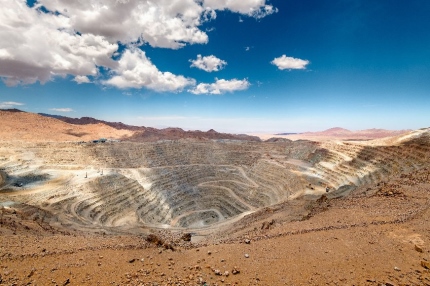For thousands of years, the dual histories of humans and copper mining have intertwined.
Copper is one of the few metals occurring in nature in a directly usable metallic form. This led to very early human use, beginning around 8000 BC. Thousands of years later, it was the first metal to be smelted from sulfide ores, circa 5000 BC; the first metal to be cast in a shaped mold, circa 4000 BC; and the first metal to be purposely alloyed with another metal—tin—to create bronze, around 3500 BC.
Today, copper remains the standard we compare against all other electrical conductors. It is central to the harnessing and transmission of electrical energy. And along with some rare earth minerals, copper is central to our transition towards a low carbon-intensity world.

The Doctor Is Ill?
“Doctor Copper” is, as Investopedia explains, “reputed to have a ‘Ph.D. in economics’ because of its ability to predict turning points in the global economy.” Unfortunately, it appears as if Doctor Copper has been feeling unwell lately.
Thanks to rising interest rates, the prospect of negative economic growth, is being reflected in the price of copper. Over the second quarter of this year, the copper price dropped by nearly a fifth, and is now well adrift of its 200-day moving average.
Part of this drop was due to the speculative short positions in copper that are betting China’s— the world’s leading importer of copper ore—will not stage an economic recovery.
That’s probably a bad bet… and it has been for last three decades.
Even ignoring China, the reality is that the market fundamentals for copper over the long haul remain highly favorable.
With the metal having a vital role to play in helping countries and companies to decarbonize, the effect of grade declines in copper mines, as well as mine depletions, will lead to a growing supply gap in the years ahead.
Energy research firm Rystad Energy forecasts that demand for the metal will increase by 16% through to the end of the decade. That means that global demand will outstrip supply by more than 6 million metric tons by 2030.
If indeed copper demand does rise 16% by 2030 that would equal 25.5 million tons per year. This compares with a supply forecast that shows a 12% decrease versus 2021 levels. Last year, global production came in at around 21million tons. Estimates based on current and expected projects show supply will clock in at just 19.1 million tons per year, falling well short of the quantity needed to meet demand.
The pricing outlook for copper mining companies, despite the recent weakness, is bright in the years ahead.
Stock Market Bears
Despite all this, Wall Street is highly bearish on mining companies, offering investors a real bargain.
The world’s largest mining companies, BHP Group (BHP), Rio Tinto (RIO), Glencore (GLNCY), and Anglo American (NGLOY) are still set to record results this year that should comfortably surpass the profits made during the last commodity bull market a decade ago.
And they will also spew out cash, having slashed spending on new mines and projects since the peak of the previous cycle in 2011 by as much as 50%.
JPMorgan says Rio and BHP are likely to pay huge dividends this year, at almost $20 billion and $18.2 billion respectively. JPMorgan estimated the total capital return from the duo is equivalent to a dividend yield per share of about 13.5% and 11.1% for 2021 respectively. This estimate is about a month old and the price of the stocks has dropped since then, making the yield even higher for investors getting in now.
Plus, these companies have dirt-cheap valuations. In a May 5 article in the Financial Times—published before the recent stock selloff—Natural Resources editor Neil Hume wrote (emphasis mine): “At current prices the value of BHP, the world’s biggest mining company, including net debt is just 3.5 times its forecast earnings before interest, tax, depreciation and amortization this year, according to estimates from UBS. Likewise, Rio trades on a multiple of about 3 times, Anglo 3.6 and Glencore under 3.0.”
Hume pointed out that conditions are different from when the metals markets tanked after 2011. Back then, the cycle was already mature, with China’s rapid industrialization already well established. This cycle—with decarbonization at its core—is still in its infancy.
Another positive factor is that the global pandemic recovery programs many governments put in place are more commodity intensive than was the case after the 2008-09 financial crisis. That makes commodity markets less dependent on China.
And like the oil industry, the mining industry today is more disciplined and focused on shareholder returns than it was10 years ago.
For example, in 2012, BHP’s capital expenditure budget was more than $20 billion. In 2022, it is forecast to be only $8.5 billion. One reason for that is BHP is finding it increasingly difficult to find new projects in mining-friendly jurisdictions that are economically viable.
All of which—again, like the oil industry—should help keep a lid on supplies and prices high.





